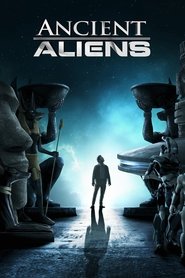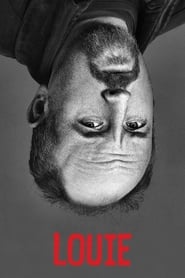Season
- Season 0 1966-12-25
- Season 1 1964-02-04
- Season 2 1965-01-06
- Season 3 1966-01-02
- Season 4 1967-01-17
- Season 5 1968-01-02
- Season 6 1969-01-02
- Season 7 1970-01-05
- Season 8 1971-01-04
- Season 9 1972-01-03
- Season 10 1973-01-04
- Season 11 1974-01-07
- Season 12 1975-01-20
- Season 13 1976-01-05
- Season 14 1977-01-07
- Season 15 1978-01-06
- Season 16 1979-02-26
- Season 17 1980-01-14
- Season 18 1981-01-05
- Season 19 1982-01-11
- Season 20 1983-01-10
- Season 21 1984-01-09
- Season 22 1985-01-07
- Season 23 1986-01-06
- Season 24 1987-01-05
- Season 25 1988-01-04
- Season 26 1989-01-09
- Season 27 1990-01-08
- Season 28 1991-01-07
- Season 29 1992-01-06
- Season 30 1993-01-04
- Season 31 1994-01-10
- Season 32 1995-01-09
- Season 33 1996-01-08
- Season 34 1997-02-27
- Season 35 1998-02-19
- Season 36 1999-01-28
- Season 37 2000-01-12
- Season 38 2001-01-25
- Season 39 2002-01-10
- Season 40 2003-01-09
- Season 41 2004-01-08
- Season 42 2005-01-13
- Season 43 2006-01-12
- Season 44 2007-03-13
- Season 45 2008-01-15
- Season 46 2009-01-26
- Season 47 2009-10-13
- Season 48 2010-09-27
- Season 49 2011-08-08
- Season 50 2012-07-23
- Season 51 2013-08-12
- Season 52 2014-08-18
- Season 53 2016-03-16
- Season 54 2017-01-19
- Season 55 2018-02-05
- Season 56 2019-01-23
- Season 57 2020-01-16
- Season 58 2021-01-04
- Season 59 2022-03-31
- Season 60 2024-07-22
Season 60 Episode
- Season 39 Helike - The Real Atlantis
- Season 39 Volcano Hell
- Season 39 Fatbusters
- Season 39 The Lost Pyramids of Caral
- Season 39 Death of the Iceman
- Season 39 Parallel Universes
- Season 39 The Dinosaur that Fooled the World
- Season 39 The Fall of the World Trade Center
- Season 39 Archimedes' Secret
- Season 39 The Mystery of the Jurassic
- Season 39 Killer Lakes
- Season 39 The A6 Murder
- Season 39 The England Patient
- Season 39 Freak Wave
- Season 39 Stone Age Columbus
- Season 39 Homeopathy: The Test
- Season 39 The Day the Earth Nearly Died
- Season 39 The Secret of El Dorado

Horizon - Season 39 Episode 7 The Dinosaur that Fooled the World
In the mid 1800s, when Charles Darwin published his theory of evolution, one species of animal remained a mystery; where did birds fit on his evolutionary tree? Several years later his friend and colleague, Thomas Henry Huxley, came up with an answer. Huxley had recently examined a new fossil from southern Germany called Archaeopteryx which was causing considerable excitement in palaeontological circles. There were clear signs of feathers and it was obvious this was the earliest fossil evidence of a bird ever found. Huxley noticed something else as well. To him it looked as though the skeleton bore a striking similarity to that of a family of meat eating dinosaurs known as therapods.
In the 1860s, on the basis of this observation, he announced a new theory; birds must have evolved from dinosaurs. The theory ignited what was to become one of the biggest controversies in palaeontology. Could Huxley possibly be right; how could a large, land-bound creature like a dinosaur have ever evolved into something as light and sleek as a bird? Many questioned the accuracy of Huxley's observations and ever since there has been a search for further fossil evidence to confirm the theory; a transitional animal which would incontrovertibly show how, in one creature, birds had evolved from dinosaurs. It has become one of the big missing links in palaeontology.
In Spring 1999, at the Tucson Gem and Fossil Fair in Arizona, an American collector came across a new Chinese fossil which seemed to be just this transitional animal. It had the head and upper body of a bird but the tail of a dinosaur. It was called Archaeoraptor or 'ancient hunter'.
Throughout the 1990s a number of important fossils emerged from China showing an apparent relationship between dinosaurs and birds. Practically all come from a region in the north of the country called Liaoning, one of the richest fossil areas in the world. Here, 130 million years ago, volcanic eruptions buried a wetland once teeming in wildlife. Many of the fossils have been magnificently preserved in the fine silt; some even have the remains of soft tissue attached to them.
It was here, in 1996, that Chinese scientists found a creature they called Sinosauropteryx, an animal which bore many similarities to a dinosaur but appeared to have been covered in a feathery like coat. Two years later a joint Chinese/American team found an even more striking creature; a dinosaur like animal with very clear feathers which they called Caudipteryx. Other similar feathered dinosaurs followed, including in 1999, an important specimen called Sinornithosurus. Yet to those who questioned the relationship between dinosaurs and birds, these fabulous finds raised as many questions as they answered. Were the feather-like markings really signs of feathers, or were they something else? And were the skeletons really those of dinosaurs or were they, in fact, the skeletons of new, as yet unidentified, birds? What was still missing was the piece of evidence which would satisfy everybody.
The new Archaeoraptor fossil, also from the Liaoning region of China, seemed to be just that. Here, in one animal, was a unique range of dinosaur and bird features. It had the skull and upper body of a bird, but the teeth and hands of a dinosaur. It also had the legs of a bird but the tail of a dinosaur. It was the most complete set of transitional features ever found in one creature. In November 1999 National Geographic Magazine gave it a special mention in an article about the origins of birds, calling it, "a true missing link.". The debate, started by Thomas Huxley in the 1860s, seemed to have been resolved.
Yet within months, new finds in China showed Archaeoraptor to be an extremely clever fake. The head and upper body of a hitherto unidentified bird had been glued onto the tail of a previously unknown dinosaur. It was a journalistic disaster for National Geographic Magazine. The fossil, however, was anything but a disaster for palaeontology. By an extraordinary stroke of good luck, as scientists in China and America examined the head and tail separately, they found that both were, in their own right, unique and extremely valuable specimens. Both, in their different ways, contained powerful evidence that birds had evolved from dinosaurs.

 Download 4K
Download 4K Download HD
Download HD Download HD
Download HD Download HD
Download HD





























